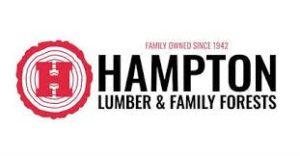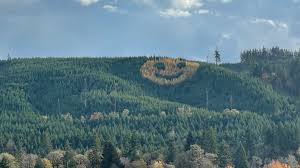EDITOR’S NOTE: Just like “eating local”, we should also be aware of where our wood comes from. As we celebrate Earth Day (every day) and Arbor Day, here’s a timely piece from Hampton Lumber about our local wood products company.
When Pacific Northwest residents visit their local lumber yard, many don’t realize they’re shopping for wood that was grown, harvested, and milled by their neighbors in communities just down the highway. This Earth Day, we celebrate the remarkable local story behind the region’s wood products.
From Farm to Table, From Forest to Frame:
Just as many Pacific Northwest residents take pride in knowing where their food comes from—shopping at farmers markets and supporting local agriculture—there’s equal reason to care about and celebrate the origin of the wood products that build our homes and communities. The journey from forest to lumber yard is a story of long-term stewardship, ingenuity, hard work, and sustainability that rivals any farm-to-table narrative:
1. Local roots, global reputation – The Pacific Northwest stands as America’s premier timber region, with Oregon and Washington ranking #1 and #2 respectively in softwood lumber production
2. Community connection – The lumber in your home was likely milled locally, having been harvested from forests managed by people living in rural towns throughout the Pacific Northwest
3. Sustainable cycle – These forests are continuously replanted and managed for long-term health.
Sustainability in Action:
Nothing Goes to Waste When a log arrives at a Pacific Northwest mill, 100% of that resource is utilized. What doesn’t become dimensional lumber is transformed into:
● Biofuel for renewable energy
● Pulp and paper products
● Particleboard and engineered wood products
● Agricultural products like animal bedding and soil amendments
This zero-waste approach exemplifies a commitment to maximizing the value of every tree harvested.
The Backbone of Rural Communities
The timber industry remains the economic foundation of many rural communities. Working forests provide family-wage jobs, support local schools through tax revenue, and maintain working landscapes that have defined our region for generations.
Expert Stewardship
Pacific Northwest working forests are grown, protected, and harvested by trained professional foresters with degrees in silviculture and forest engineering. These professionals apply cutting-edge science and best management practices to ensure forests remain productive and healthy, waterways are protected, and essential habitats are maintained.
Where Does Our Wood Come From?
All forests contribute to healthy ecosystems and vibrant local communities but not all do so in the same way. We grow a lot of trees in the Pacific Northwest. Roughly half of the land base in Oregon and Washington is forested. Of that, 51.3 million acres (or 54 percent) is publicly owned. While state forests offer timber sales to support counties, taxing districts, and ongoing forest management expenses, over 50 percent of state lands are set-aside for conservation. The federal government, however, is by far the largest forestland owner in the region. Nationwide, roughly 65 percent of U.S. national forestland is managed as wilderness or otherwise off-limits to harvest. Of the 35 percent remains available to harvest, only 0.5 percent is harvested each year. Simply put, the vast majority of public forestland in the region is off limits to commercial harvesting under existing conservation designations and strong state and federal environmental regulations. Most lumber produced locally and purchased by Pacific Northwest consumers comes from one-third of the region’s forestland. These well-managed private forests operate under strict environmental standards and while they provide a number of ecological benefits throughout the lifecycle of the forest, they are managed primarily for timber production. These lands are always replanted within a few years of harvest to ensure forest resources will continue to provide for future generations. Meeting Global Demand As the world’s population continues to grow—projected to reach 10 billion by 2060 —the demand for sustainable building materials is increasing dramatically. Wood from the Pacific Northwest is a global commodity, with our region’s high-quality products sought after worldwide. The United Nations estimates that cities will need to construct or renovate an additional 2.5 trillion square feet of building space to accommodate this increase. The non-profit Architecture 2030, which works to reduce energy consumption of, and greenhouse gas emissions from the built environment, puts this increase in demand into perspective for us; 2.5 trillion square feet is equivalent to adding another New York City to the planet every month for the next 40 years. With nearly 40 percent of all human-caused carbon emissions coming from construction and the built environment, substituting wood for carbon-intensive building materials could be a valuable tool in our fight against climate change. Indeed, our region is already well-positioned to be a leader in this movement.
Leading the Advanced Wood Manufacturing Revolution
The Portland International Airport terminal renovation exemplifies what is possible with local forest resources and milling infrastructure. Indeed, cities around the world are increasingly prioritizing wood over carbon-intensive building materials like steel and concrete to combat climate change. The Pacific Northwest is uniquely positioned to lead this evolution:
1. Mass Timber Innovation: The surge in demand for climate-friendly mass timber products like cross-laminated timber (CLT) presents an extraordinary opportunity for our region. These advanced engineered wood products can be used to construct tall buildings—transforming urban skylines with renewable materials. (EDITOR’S NOTE: The new North County Recreation District Aquatics Center utilizes Mass Timber construction.)
2. Carbon-Smart Building Solutions: Research published in the Journal of Green Building found that more carbon is stored in CLT than is emitted to create it, making it a carbon-negative building material when sourced from sustainably managed forests.
3. Global Leadership Potential: Few places in the world grow trees as well and as sustainably as we do in the Pacific Northwest. We have the resources, knowledge, and infrastructure to lead the world in advanced wood manufacturing—creating high-value products that serve both environmental and economic goals.
4. Addressing Carbon Leakage: The world needs wood—lots of it. If we don’t produce it here under strong environmental standards, production will simply shift to other regions. By maintaining a vibrant local wood products industry, we ensure both environmental integrity and economic opportunity.
Why This Matters Now:
As our region faces multifaceted climate threats including floods, storms, droughts, wildfires, and heat waves, supporting local, sustainable forestry becomes increasingly important. Well-managed forests help address these challenges while providing essential products and supporting rural economies.
“Just as people increasingly want to know where their food comes from, we believe they should take pride in knowing where their wood comes from,” says Kristin Rasmussen, Director of Public Affairs and Communications for Hampton Lumber. “When Pacific Northwest residents choose local wood products, they’re supporting their neighbors, strengthening rural communities, and participating in one of the most sustainable industries in our region.”
 Hampton Lumber is a fourth-generation, family-owned company headquartered in Portland, Oregon. With over 80 years in the sawmill business, Hampton operates sawmills in Oregon, Washington, and British Columbia and markets wood products all over the world. Hampton also manages a wholesale and lumber export division, numerous reload locations, and several remanufacturing and advanced wood manufacturing facilities throughout the U.S. All of Hampton’s forestlands are certified by the Sustainable Forestry Initiative (SFI), an independent, non-profit organization that promotes sustainable forest management. SFI-certified forests play an important role in water conservation, wildlife habitat, and climate solutions.
Hampton Lumber is a fourth-generation, family-owned company headquartered in Portland, Oregon. With over 80 years in the sawmill business, Hampton operates sawmills in Oregon, Washington, and British Columbia and markets wood products all over the world. Hampton also manages a wholesale and lumber export division, numerous reload locations, and several remanufacturing and advanced wood manufacturing facilities throughout the U.S. All of Hampton’s forestlands are certified by the Sustainable Forestry Initiative (SFI), an independent, non-profit organization that promotes sustainable forest management. SFI-certified forests play an important role in water conservation, wildlife habitat, and climate solutions.


